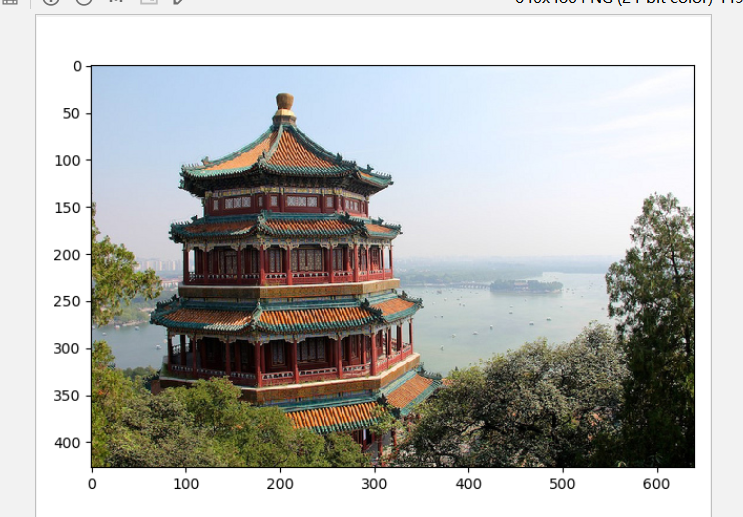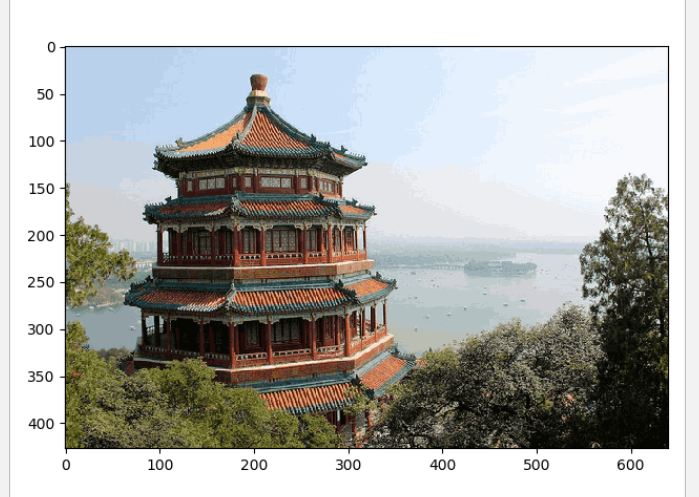机器学习四
1. 应用K-means算法进行图片压缩
from sklearn.datasets import load_sample_image from sklearn.cluster import KMeans import matplotlib.pyplot as plt import matplotlib.image as img import numpy as np import sys china = load_sample_image("china.jpg") X=china.reshape(-1,3) model=KMeans(64) labels = model.fit_predict(X) colors = model.cluster_centers_ new_img = colors[labels].reshape(china.shape) plt.imshow(china) plt.show() plt.imshow(new_img.astype(np.uint8)) plt.show() memory_size = sys.getsizeof(china) print("原占用内存:",memory_size) memory_size2 = sys.getsizeof(new_img) print("压缩后占用内存:",memory_size2) img.imsave("C:\\Users\\15108\\Desktop\\temp\\china.jpg",china) img.imsave("C:\\Users\\15108\\Desktop\\temp\\new_img.jpg",new_img)
结果:

原图片:

压缩后图片:

2. 观察学习与生活中可以用K均值解决的问题。
# 天气情况类似适合旅游的 import pandas as pd import numpy as np from sklearn.datasets import load_iris from sklearn.cluster import KMeans import matplotlib.pyplot as plt df = pd.DataFrame({ 'city' : pd.Categorical(["广州","番禺","从化","增城","花都","韶关","乳源","始兴","翁源","乐昌"]),#城市名 'high' : np.array([23,25,25,22,25,23,25,23,22,22],dtype='int32'),#最高温度 'low' : np.array([16,18,12,15,15,15,14,13,14,14],dtype='int32'),#最低温度 'fl' : np.array([3,3,2,1,2,1,3,2,1,3],dtype='int32'),#风力 }) # 取数据集 x2=df.iloc[:,1:] # 模型的构建和训练 k2=KMeans(n_clusters=2) k2.fit(x2) kc2=k2.cluster_centers_ y_kmeans2=k2.predict(x2) print(y_kmeans2) # 增加一列类别 df['same'] = y_kmeans2 # 天气情况类似0 print(df[df.same==0]) # 天气情况类似1 print(df[df.same==1])




